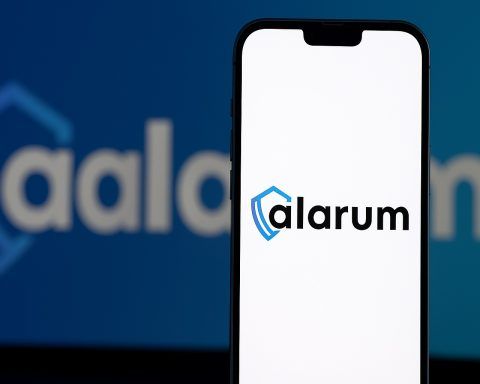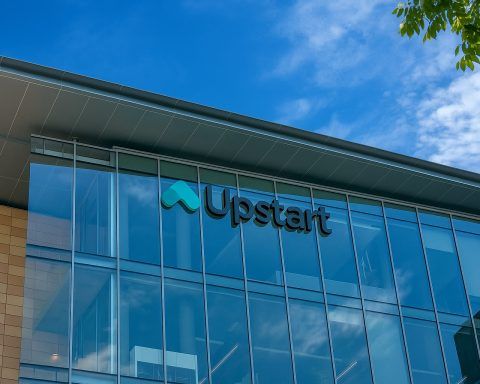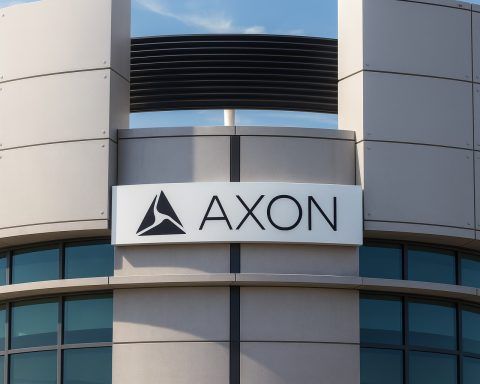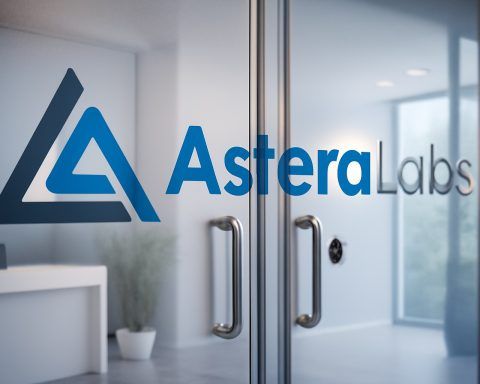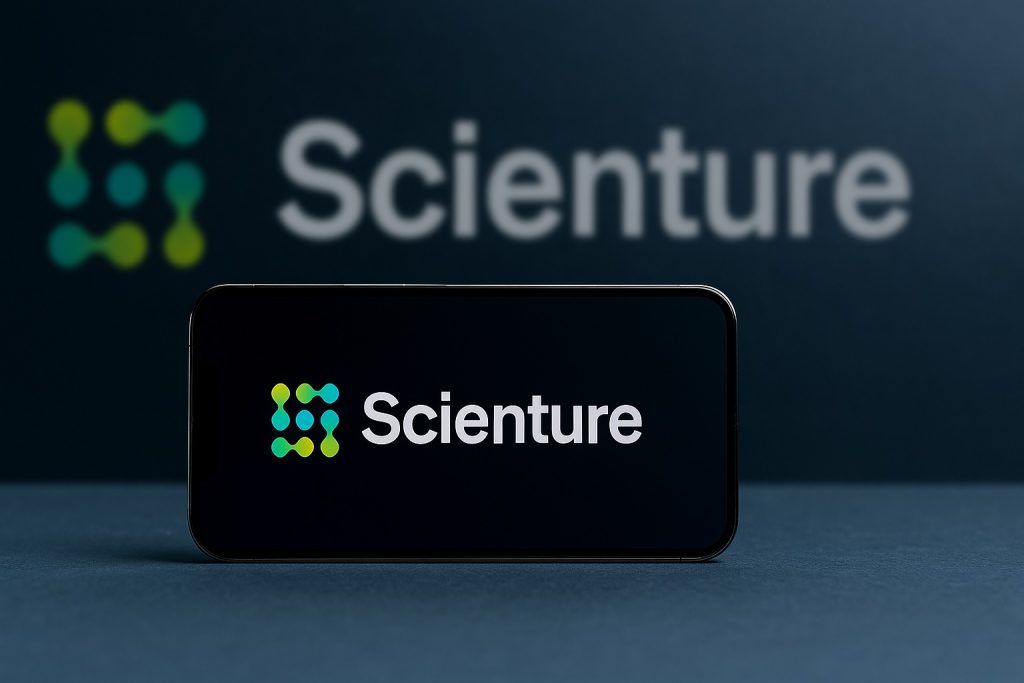- Massive Volatility: Prelude Therapeutics (NASDAQ: PRLD) stock soared over 150% in one day and then plunged about 40% the next, amid unprecedented trading volumes [1]. Shares hit a 52-week high near $4 after a huge rally, only to fall back to the mid-$2 range following new announcements [2] [3].
- Big Pharma Partnership: On November 4, Prelude announced Incyte Corp. will pay $60 million upfront (a $35 million cash payment plus a $25 million equity investment at $4/share) for an exclusive option to acquire Prelude’s JAK2 inhibitor program for blood cancers [4]. If Incyte exercises the option, Prelude would get $100 million more and up to $775 million in milestone payments, plus royalties [5].
- Pipeline Reboot: Prelude is refocusing on two lead programs – a mutant-selective JAK2<sup>V617F</sup> inhibitor for myeloproliferative neoplasms (a type of chronic blood cancer) [6] and a first-in-class KAT6A degrader for breast cancer – while pausing its SMARCA2 degrader program after reviewing early clinical data [7] [8]. The company’s Chief Medical Officer has departed amid these strategic shifts [9] [10].
- Cash Runway Extended: Prelude had ~$52 million cash as of Oct 31 and with the Incyte deal expects to fund operations into 2027 (possibly late 2028 if Incyte buys the program) [11] [12]. It will report Q3 2025 earnings on Nov. 12, 2025 and was previously projected to post a quarterly loss of ~$0.35/share, an improved outlook from earlier forecasts [13] [14].
- Analyst Outlook: Wall Street sentiment is cautiously optimistic. The consensus rating is “Moderate Buy” with an average price target around $4 [15]. Recent analyst target upgrades range roughly from $3 to $5/share [16]. Experts note the Incyte deal brings “meaningful non-dilutive capital” and validates Prelude’s science [17], but caution that future gains hinge on successful trial results and Incyte’s option decision.
A Wild Week for PRLD Stock
Prelude Therapeutics – a small precision oncology biotech – suddenly became one of the market’s most volatile stocks in early November 2025. On Monday, Nov 3, PRLD shares skyrocketed, at one point gaining over 150%. The stock surged from roughly $1.60 into the $3–4 range, fueled by speculative buzz and unusually heavy trading [18]. More than 29 million shares changed hands in a single day (versus an average of ~250,000), and the price hit a 52-week high of $4.19 [19]. By the session’s end, Prelude closed near $4 – an astronomical one-day move for a company of its size.
However, the very next day, Tuesday Nov 4, the rally reversed sharply. Prelude announced major news before the market opened, and the stock was briefly halted for volatility [20]. After an initial pop of about 10% on the news, profit-taking set in; by late morning the stock had plunged ~40% from the prior day’s peak [21]. It traded around $2.5 per share on Nov 4, still well above last week’s levels but far below Monday’s euphoric highs. This whiplash in price underscores the high-risk, high-reward nature of early-stage biotech stocks.
Inside the Incyte Deal: $60 M Today, Potential $875 M+ Tomorrow
The catalyst for Prelude’s rollercoaster was a headline-grabbing partnership with Incyte Corporation, a larger pharmaceutical known for its cancer drug Jakafi (ruxolitinib) in myeloproliferative neoplasms (MPNs). Prelude Therapeutics announced on Nov 4 that Incyte secured an exclusive option to buy Prelude’s JAK2<sup>V617F</sup> inhibitor program, which targets a genetic mutation driving many MPN blood cancers [22] [23]. Incyte is paying $60 million upfront – consisting of a $35 million cash payment and a $25 million equity investment for 6.25 million Prelude shares at $4.00 each [24].
This deal provides a welcome capital infusion for Prelude without immediate dilution beyond the new shares issued to Incyte. “We’re pleased to put this agreement in place with Incyte, recognized global leaders in the MPN field,” said Prelude CEO Kris Vaddi, “Today’s agreement provides us the capital needed to advance our JAK2<sup>V617F</sup> program, while also allowing us to advance our other pipeline programs.” [25] The JAK2 inhibitors developed by Prelude bind a unique “deep pocket” on the mutant enzyme, aiming to selectively kill cancerous blood cells and potentially modify the course of MPN disease [26].
Under the option structure, Prelude will continue developing the JAK2 program through early clinical milestones. Incyte can choose to exercise its purchase option for $100 million (likely after seeing initial human trial data). If that happens, Prelude could earn up to $775 million in additional milestone payments as the program progresses, plus single-digit royalties on future sales [27]. All told, the partnership’s total value could approach $910 million (excluding royalties)】 [28] [29] – a huge sum relative to Prelude’s pre-deal market cap of around $200–250 million. If Incyte ultimately declines to buy the program, Prelude retains full rights after the option period [30].
Why would Incyte pay so much? MPNs are a lucrative niche – Jakafi (Incyte’s existing JAK2 inhibitor) is a blockbuster drug, and a next-generation therapy that attacks the JAK2<sup>V617F</sup> mutation at its source could be transformative [31]. By partnering early, Incyte secures a promising asset in its core focus area, while Prelude gains funding and validation from a reputable industry player. One biotech analyst called the agreement a “meaningful non-dilutive capital” boost that “refocuses [Prelude’s] pipeline” on its best opportunities [32]. Investors initially cheered the non-dilutive cash – evidenced by the stock’s pop – but some grew wary about the execution risks and the fact that full value hinges on Incyte’s future decision.
Pipeline Pivot: Focusing on JAK2 and KAT6A, Pausing SMARCA2
Beyond the Incyte deal, Prelude’s Nov 4 strategic update laid out a sweeping reprioritization of its R&D pipeline. The company is doubling down on two lead programs while shelving another:
- JAK2<sup>V617F</sup> Inhibitors (Blood Cancer): Now backed by Incyte’s partnership, this program targets the dominant mutation in MPN blood cancers. Early preclinical data are strong enough that an abstract was selected for an oral presentation at the upcoming ASH (American Society of Hematology) conference in December 2025 [33] [34]. Prelude will push these mutant-selective JAK2 inhibitors into the clinic with Incyte’s support, hoping to show they can reduce the abnormal blood cell proliferation in diseases like polycythemia vera and myelofibrosis [35]. Success could eventually challenge first-generation JAK2 drugs like Jakafi.
- KAT6A Degrader (Solid Tumor Cancer): Prelude’s other high-priority project is a first-in-class KAT6A protein degrader for estrogen receptor-positive (ER+) breast cancer and other malignancies [36]. KAT6A is a novel epigenetic target recently implicated in cancer growth. Prelude claims to have the industry’s first potent, selective degrader for this protein [37]. The company is on track to file an IND (investigational new drug application) and start human trials of the oral KAT6A drug by mid-2026 [38] [39], with initial clinical proof-of-concept data possible later next year. Management touts KAT6A degradation as a potentially differentiated approach that could improve efficacy and tolerability over less selective therapies [40].
- SMARCA2 Degrader (Solid Tumor Cancer): In a tough decision, Prelude paused further clinical development of its SMARCA2 degrader program [41]. SMARCA2 (also known as BRM) was an earlier focus, including an IV drug (PRT3789) that completed a Phase 1 trial for SMARCA4-deleted cancers. But results must have been underwhelming, and the company determined that continuing would require more resources and combination strategies than it can currently afford [42] [43]. Instead, Prelude will conserve cash and prioritize the JAK2 and KAT6A programs with clearer near-term potential. (Notably, Prelude had begun testing an oral SMARCA2 degrader (PRT7732) in a Phase 1 dose escalation, but it appears even this is on hold pending further data [44] [45].) Management hasn’t ruled out revisiting SMARCA2 in the future, but for now it’s on the back burner.
These choices mark a significant strategic shift. CEO Kris Vaddi explained that tackling SMARCA2’s complex biology would “require early intervention and combination strategies” that Prelude isn’t resourced to pursue right now [46]. Instead, the fresh capital from Incyte will be channeled into the JAK2 blood cancer program and the KAT6A breast cancer program, where the company sees the most “transformative potential” for patients and nearer-term value for investors [47] [48].
Alongside these pipeline moves, Prelude announced a high-level personnel change: President and Chief Medical Officer Dr. Jane Huang resigned to pursue other opportunities [49] [50]. In the interim, board member Dr. Victor Sandor – a veteran oncology drug developer (formerly of Incyte, Biogen Idec, AstraZeneca) – will help oversee clinical development of the KAT6A and JAK2 programs [51]. The leadership change suggests a desire for fresh clinical strategy as the company enters a pivotal 2026.
Financial Health: Cash Infusion and Runway Update
For a clinical-stage biotech with no revenue, cash is life – and Prelude’s financial runway just got a lot longer. Prior to the deal, Prelude had about $52 million in cash and equivalents as of October 31, 2025 [52]. Its last reported burn rate was roughly $30 million per quarter in Q2 2025 [53], which meant the pre-deal cash would only last into mid-2026. The $60 million injection from Incyte effectively doubles Prelude’s cash reserves. As a result, management now projects funding for operations into 2027 based on current plans [54] [55]. If Incyte ultimately exercises the option and pays the extra $100 million, Prelude estimates its cash runway could extend into Q3 2028 [56] [57] – a substantial cushion.
However, it’s important to note that Incyte’s $100 million option payment is not guaranteed. Prelude’s own press release explicitly cautioned that its 2027 runway assumption is “based on preliminary estimates” without counting on the option, and any extension to 2028 requires Incyte exercising the option under customary conditions [58] [59]. In other words, if the JAK2 program disappoints and Incyte walks away, Prelude would likely need to raise more capital by 2027 to keep advancing its drugs.
Investors will get an updated look at Prelude’s finances soon. The company is scheduled to report third-quarter 2025 earnings on November 12, 2025, followed by an investor conference call [60]. Analysts expect a quarterly loss of about $0.35 per share, which actually reflects an improvement from earlier forecasts (the projected loss was ~$0.41 a few weeks prior) [61]. This positive revision suggests expenses are being managed or R&D timelines adjusted, and may have contributed to optimism in the stock before the deal. Any new guidance on R&D spending or cash burn in that earnings update will be closely watched, given the company’s shifting priorities.
Looking further ahead, key R&D milestones could also impact Prelude’s financial picture and stock sentiment. In early December, the company will present data on its JAK2 and CALR programs at the ASH conference [62] – strong results there could build momentum (and perhaps attract additional partnering interest). By late 2025, Prelude expects to share initial Phase 1 data for its oral SMARCA2 degrader (PRT7732), even though the program is paused, which will inform whether that asset has future value [63] [64]. And in 2026, initiation of the KAT6A degrader’s first clinical trial will be a major event, likely requiring careful allocation of resources that the Incyte funds now support.
Market Reaction: Confidence and Caution
The dramatic swings in PRLD stock reflect a mix of excitement and caution among investors and traders:
- Confidence in the Science: The partnership with Incyte, a reputable mid-size pharma, legitimizes Prelude’s science in the eyes of many. It’s no small feat for a young biotech to have a larger company essentially validate one of its drug programs with a multi-million dollar commitment. Additionally, Prelude’s shareholder roster includes top-tier biotech investors – funds like OrbiMed Advisors and Baker Bros. Advisors each own roughly 23–25% of the company’s shares [65] – suggesting that knowledgeable insiders see promise here. This backdrop of support likely fueled the massive buying frenzy on Nov 3 as word spread of impending news and optimism ahead of the ASH conference and earnings. Prelude’s year-to-date stock performance was already strong (over +210% YTD as of Nov 4 even after the pullback) [66], reflecting how oversold the stock had been and how quickly sentiment shifted positive.
- Profit-Taking and Risk Realization: On the flip side, the 40% drop on Nov 4 shows that the market is still highly cautious. Some of Monday’s spike was undoubtedly driven by short-term traders, and once the actual deal news was out, many rushed to lock in profits. Biotech investors also digested that while $60 million helps Prelude, the company parted with a potential asset (the JAK2 program) and will rely on Incyte to realize its full value. The dilution from issuing new shares to Incyte at $4, while relatively small, also capped immediate upside. Moreover, risk-sensitive holders noted that Prelude is years away from product revenue, with key drug trials only just beginning. The stock’s round-trip from $1.5 → $4 → $2-3 in two days highlights how quickly sentiment can flip in this sector. As one market commentator quipped on social media, “That escalated quickly…and collapsed even quicker,” capturing the whipsaw nature of speculative biotech trading.
In short, Prelude’s share price is likely to remain volatile, driven by clinical news and investor risk appetite. The involvement of Incyte and presence of major biotech funds lends credibility, but execution risks – from clinical trial outcomes to regulatory hurdles – are still significant at this stage.
Analyst Views and Stock Forecasts
Wall Street analysts covering Prelude Therapeutics have generally welcomed the recent developments, while maintaining realistic expectations. According to TipRanks, the stock has a “Moderate Buy” consensus based on recent coverage, with 2 out of 2 analysts rating it a Buy [67]. The average 12-month price target is approximately $4 per share, essentially in line with the stock’s post-news trading price [68]. That suggests analysts see limited upside in the near term after the stock’s huge move – they may be in “wait-and-see” mode for now.
Some analysts have become more bullish in light of Prelude’s progress. In late October (even before the Incyte deal), the average price target was bumped up to ~$4.42 per share, up ~24% from the prior average [69]. Recent target estimates span from about $3 on the low end to $5+ on the high end [70], indicating differing views on how much Prelude’s pipeline could ultimately be worth. For example, one analyst raised their target to $5, citing the company’s unique pipeline and upside potential if milestones are hit. On the other hand, the lowest targets (around $3) imply concern that dilution or setbacks could pull the stock back down.
Notably, Wall Street’s cautiously optimistic stance has improved alongside Prelude’s fundamentals. The narrowing of expected losses and extension of the cash runway reduce the immediate financial risk [71]. And the fact that two independent analysts recently initiated or reiterated bullish ratings gives credibility amid the volatility. However, they also emphasize that upcoming data readouts will be critical. As one biotech strategy expert noted, “the next six months will be defined not by speculation, but by data”, with Prelude’s trajectory hinging on clinical results and the execution of its streamlined strategy [72].
For investors and observers, the consensus seems to be: Prelude is a high-risk, high-reward story. If its cancer drugs show clear efficacy in trials or if Incyte exercises that option, the stock could rally significantly beyond current levels. Conversely, any disappointing trial data or hiccups (and the lack of further partnership money) could send the shares back down toward pre-rally levels. At least in the short term, the $4 area – which coincidentally is both the Incyte deal share price and the analysts’ average target – might act as an anchoring value until new information emerges [73].
Conclusion: Outlook and Takeaways
Prelude Therapeutics has grabbed headlines with its spectacular stock swings and major pharma partnership. For a public investor, the key takeaways are clear: Prelude now has a stronger cash position and industry validation, but it remains in the early innings of proving its worth. The company’s precision oncology pipeline is now tightly focused on two ambitious programs – one aiming to outmaneuver a cornerstone cancer mutation in the blood, the other breaking new ground against a novel target in solid tumors. This focus, bolstered by Incyte’s funding, gives Prelude a fighting chance to advance these potential breakthrough therapies in the next couple of years.
Still, caution is warranted. The road for biotech startups is rarely smooth. Prelude’s fortunes will likely ebb and flow with each clinical update. Investors should watch for milestones like the ASH conference presentations in December, the first patient dosed in the KAT6A degrader trial in 2026, and whether Incyte ultimately pulls the trigger on acquiring the JAK2 program. Each of these events could meaningfully re-rate the stock – for better or worse.
In the meantime, Prelude’s story exemplifies the volatility of biotech: huge gains on hope and hype, tempered by reality checks as the hard work continues. As of now, the company has bought itself time and validation. Experts suggest staying tuned but grounded: “The deal de-risks the near term, but execution is everything from here,” one analyst summarized. For investors with appetite for risk, Prelude Therapeutics offers a front-row seat to innovative cancer drug development – with all the thrills and spills that come with it.
Sources: Recent press releases and news on Prelude Therapeutics [74] [75]; TipRanks market analysis [76] [77]; investing.com coverage [78] [79]; RTT News commentary [80] [81]; and company investor materials.
References
1. www.tipranks.com, 2. www.rttnews.com, 3. www.tipranks.com, 4. www.tipranks.com, 5. www.tipranks.com, 6. www.tipranks.com, 7. www.stocktitan.net, 8. www.investing.com, 9. www.stocktitan.net, 10. www.stocktitan.net, 11. www.stocktitan.net, 12. www.investing.com, 13. www.stocktitan.net, 14. www.ad-hoc-news.de, 15. www.tipranks.com, 16. www.nasdaq.com, 17. www.stocktitan.net, 18. www.rttnews.com, 19. www.rttnews.com, 20. www.investing.com, 21. www.tipranks.com, 22. www.globenewswire.com, 23. www.tipranks.com, 24. www.tipranks.com, 25. www.investing.com, 26. www.globenewswire.com, 27. www.tipranks.com, 28. www.globenewswire.com, 29. www.globenewswire.com, 30. www.globenewswire.com, 31. www.globenewswire.com, 32. www.stocktitan.net, 33. www.globenewswire.com, 34. www.rttnews.com, 35. www.globenewswire.com, 36. www.stocktitan.net, 37. www.rttnews.com, 38. www.stocktitan.net, 39. www.rttnews.com, 40. www.rttnews.com, 41. www.stocktitan.net, 42. www.stocktitan.net, 43. www.stocktitan.net, 44. www.rttnews.com, 45. www.stocktitan.net, 46. www.stocktitan.net, 47. www.stocktitan.net, 48. www.stocktitan.net, 49. www.stocktitan.net, 50. www.stocktitan.net, 51. www.stocktitan.net, 52. www.stocktitan.net, 53. www.rttnews.com, 54. www.stocktitan.net, 55. www.investing.com, 56. www.stocktitan.net, 57. www.investing.com, 58. www.stocktitan.net, 59. www.stocktitan.net, 60. www.stocktitan.net, 61. www.ad-hoc-news.de, 62. www.rttnews.com, 63. www.rttnews.com, 64. www.rttnews.com, 65. www.nasdaq.com, 66. www.tipranks.com, 67. www.tipranks.com, 68. www.tipranks.com, 69. www.nasdaq.com, 70. www.nasdaq.com, 71. www.ad-hoc-news.de, 72. www.rttnews.com, 73. www.tipranks.com, 74. www.globenewswire.com, 75. www.stocktitan.net, 76. www.tipranks.com, 77. www.tipranks.com, 78. www.investing.com, 79. www.investing.com, 80. www.rttnews.com, 81. www.rttnews.com



